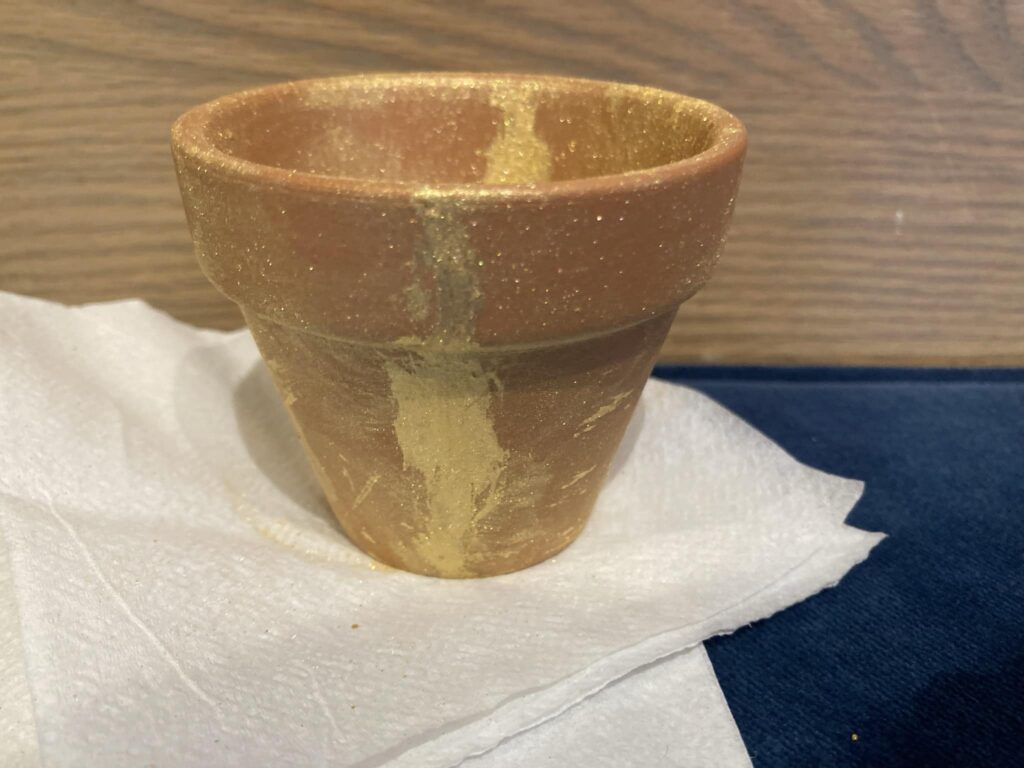
The brown flower pot was criss-crossed with gold paint, highlighting the cracks where my child had glued the pieces together. A chunk of the top was missing, a section we couldn’t find.
This broken pot was not an accident. In fact, it was an arts and crafts project at church. But there’s been no lack of shattered pots in our household, physical or metaphorical.
The powdered cheese spilled while a child is helping make Mac and cheese. The new rabbit water bowl shattered on the floor. Yelling at a child when he dawdles for a solid half-hour at bedtime. The holes in a sweater from a rabbit chewing on clothing left on the floor. A donut for one kid and not one for the other who wasn’t there but realized what he was missing later.
In all of these cases, someone – a parent or child – screwed up. We were real and broken. We were vulnerable as all broken things are.
But then, after each, there has been repair. Wiping up floors, sweeping up shattered pottery, darning holes, sincere apologies. The damage was never permanent, never fatal to the relationship.
In fact, that relationship was often left stronger than before. In our brokenness, we could find grace in each other. We found ways to take the broken pieces of our lives and fit them together into something bigger, like stained glass. We showed that we needed forgiveness and love from each other. As my church pastor recently said, “We need one another’s brokenness to make each other beautiful.”
In admitting that vulnerability, we eventually reestablished trust, whether immediately or over time. Kids feel vulnerable all the time because they lack power in our society. But for them to see an adult be vulnerable in that way and admit it? That’s revolutionary.
That vase with the gold paint was a form of the Japanese idea of kitsugi. It’s the art of highlighting the places that are broken and where they’ve been repaired rather than hiding them. It’s using gold that glitters instead of transparent superglue.
That’s how repair in our relationships with our kids are too – the breaks aren’t for hiding but for recognizing. For acknowledging and even celebrating, when appropriate. Pretending our relationships are perfect with each other or outside people is toxic. By hiding the brokenness, it festers. Instead, acknowledging and repairing it is healing. It shows our kids that it’s good for them to mess up and be vulnerable. That our love is a safe place for them to be fully human. It’s a good reminder for all of us.